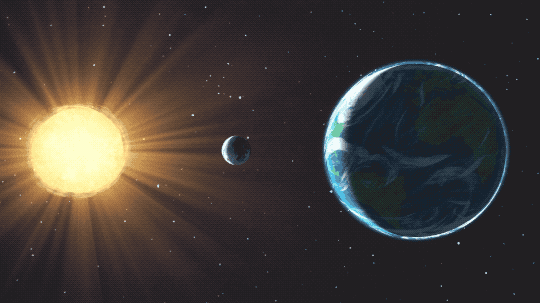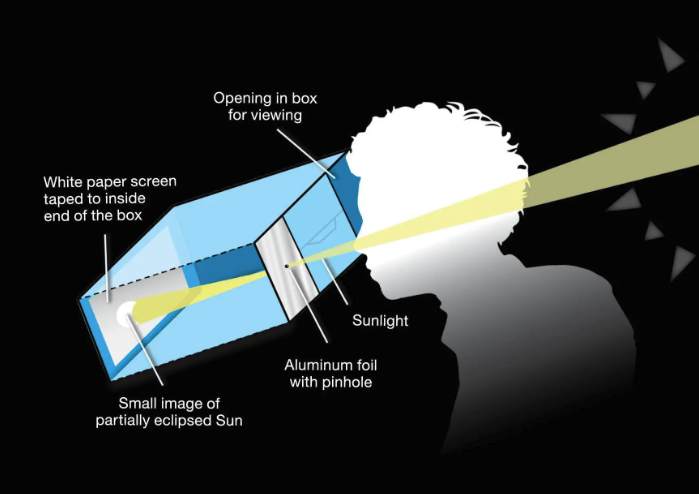MAP: Where, when and how to get the best view of the 2023 annular eclipse

A solar eclipse will be visible from numerous U.S. states on Saturday, Oct. 14, a day highly anticipated by self-described “eclipse chasers” who have called the events life-changing, equating the sight to “looking upon the eye of God.”
October’s eclipse is annular, meaning that the moon will be between the Earth and sun, but at or near its farthest distance from the Earth. That means the sun will create a bright ring effect around the moon.

You may not be an eclipse chaser, but if you’re still curious how close you are to the “path of annularity,” the less-than-150-mile-wide track from which the “ring of fire” will be visible in October, take a look at the map below.
If you’re outside of that relatively narrow stripe, you may not see the ring of fire, but can still enjoy a partial view of the phenomenon. The 80-90% range includes portions of California, Nevada, Oregon, Arizona, Utah, Wyoming, Colorado, New Mexico, Oklahoma, Texas and Idaho, for instance.
How to see the ‘ring of fire’ eclipse this October, total solar eclipse in April
Moving a little further from the path of annularity, states with a 70-80% view include parts of Washington, Montana, Idaho, Wyoming, Colorado, Kansas, Nebraska, Oklahoma, Louisiana, Texas, Arkansas, California, and Arizona.
In the U.S., the annular eclipse will start at 9:13 a.m. PDT in Oregon and will last be visible in Texas at 12:03 p.m. CDT before moving on to Mexico, Guatemala, Belize, Honduras, Nicaragua and Panama, according to NASA.
In 2024, U.S. residents will be treated to a total solar eclipse on April 8. Cities near the so-called “path of totality,” the relatively slender strip from which eclipse viewers will have the best view, are already bracing for the wave of visitors.
Will you see the solar eclipse? NASA map shows ‘path of totality’ across US in 2024
In Texas, some school districts have already decided to cancel classes, while others are planning to host special events for the students.
“We are canceling classes because we are actually in the path of totality,” Megan Hamilton, district communications specialist with Marble Falls ISD, told Nexstar’s KXAN in August. “We’re expecting people from all over the world to come to our small area. So we have to look at the resources that we have and how to best accommodate.”
The do’s and don’ts of watching the annular solar eclipse
The next annular eclipse will happen on Oct. 2, 2024, and will be visible from the Southeast Pacific and Southern America. The next total eclipse will happen Aug. 12, 2026, and will be visible from the Arctic, eastern Greenland, Iceland, and northern Spain.
How to watch a solar eclipse
Unless you are in full totality, the most important thing to remember is that you should shield your eyes when staring at the sun.
“Viewing any part of the bright Sun through a camera lens, binoculars, or a telescope without a special-purpose solar filter secured over the front of the optics will instantly cause severe eye injury,” NASA warns.
Photos: Final solar eclipse of 2022 takes bite out of the sun
Eclipse glasses, which are thousands of times darker than normal sunglasses, are one way of safely viewing an eclipse. If you pick up a pair before Oct. 14, make sure they are undamaged and comply with the ISO 12312-2 international standard.

If glasses aren’t an option, you can try an indirect viewing method that allows you to see the eclipse without staring at the sun. One example would be to punch a hole in an index card and use that hole to project an image of the sun onto a nearby surface, making sure not to stare through the hole at the sun.
FOX4 Weather: View the latest Kansas City forecasts, maps and radar
While moments of totality make it dark enough to momentarily remove eye protection during a total eclipse, NASA reminds skygazers that the same isn’t true for an annular eclipse, during which the sun is partially visible.

